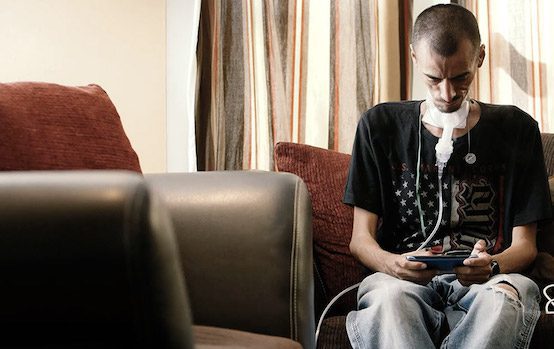The Burn Pit Vets Have Won a Victory, But to What End?

WASHINGTON — It was nearly a decade ago that this writer started hearing the stories of strange and serious symptoms among returning Iraq and Afghanistan veterans: previously young, thoroughly fit men and women now struggling like senior citizens on a mere walk to the mailbox. Skin lesions, neurological disorders, throat and lung cancer—all this pockmarked posts that flew across military and veteran blogs and websites.
The common thread: These veterans had all lived and worked around the notorious open-air pits burning thousands of tons of garbage a day across all U.S. bases, which released tremendous black plumes of toxicity into the air, a witch’s brew that cast a carbon-colored dew on everything in its path. The soldiers who worked and bunked near it had no protection as it settled inside their lungs and onto their clothes and skin.
In our first report about the burn pits in 2009, The American Conservative interviewed a veteran’s wife who said he had so much nerve damage from exposure that he had lost feeling in his feet:
After a year at Camp Taji in Iraq, (Sgt. Michael) Maynard took off his boots one night and found that a hot piece of metal had slipped inside—hot enough to tear away his skin. Somehow he hadn’t felt it.
By the time another year had passed, Maynard was back home in Indiana, confined to a wheelchair. Today, at age 49, he needs heavy braces to help him stand.
“With his muscles degenerating … he keeps falling,” his wife Maria says. “He’s a mess. I am constantly worried about him.”
The VA and Department of Defense have long denied that the burn pits have caused serious, long-term injuries to military personnel and contractors there, though mounting evidence in the medical field indicates that toxic exposure is responsible for a growing number of vets suffering from, at the very least, constrictive bronchiolitis, a disease identified by irreparable, tiny holes marking the lungs. Yet veterans are still fighting to get their injuries recognized as connected to their service so they can access health care and other benefits.

There was a small break last month, however, when the Department of Labor Workers’ Compensation Program ruled that a female contractor stationed at Mosul Air Force Base in Iraq during the war qualified for health benefits due to her deployment-related lung injuries from the burn pits.
“This case has legitimized the disease,” former contractor Veronica Landry of Colorado Springs told Fox News last week. “There are many people out there who are still not getting the treatment they need. This ruling changes that.”
Still, it’s a long way from an administrative court at the Department of Labor to legitimacy, and even more so to action in the stubborn, byzantine VA and DoD health care systems. Currently, there are some 64,000 Iraq and Afghanistan veterans (of the total 124,000 that includes Persian Gulf veterans as well) who have listed their symptoms on the burn pit registry that the VA reluctantly agreed to establish after a congressional mandate in 2013. Members of Congress, it turns out, have been the veterans’ best advocates on this in Washington.
The fate of their health care, plus how we got here—what the burn pits are, what makes them so toxic, why soldiers weren’t protected or veterans listened to when they came home, the current science about their long-term effects—are all part of “Delay, Deny, Hope You Die,” an independent documentary making its way through theaters today.
TAC is proud to be hosting a special free screening of this very important film on March 8 in Washington, D.C. It is open to the public, and will feature a Q&A with director Greg Lovett, veterans’ advocate and Persian Gulf vet Paul Sullivan, and veteran Jesse Baca who suffered injuries from the burn pits and is featured in the film. You can register here.
“Veterans and Americans need to know that more than 124,000 veterans signed up for VA’s burn pit registry, and many more filed claims that are too often denied by VA,” says Glenn R. Bergmann, whose firm represents veterans with VA disability claim appeals. “Veterans desperately need scientific research into toxic exposures so they can receive prompt and effective treatment and benefits.”
[youtube https://www.youtube.com/watch?v=t6TE0fLWOto&w=560&h=315]
Kelley Beaucar Vlahos is the executive editor of The American Conservative. Follow her on Twitter @Vlahos_at_TAC.